The name pitbull is often used to classify a broad selection of dog breeds including the American pit bull terrier, the American Staffordshire terrier, the Staffordshire bull terrier, and sometimes the American bulldog. These breeds all have slightly different lifespans.
The average life expectancy for pitbulls is 12 to 14 years.
However, this article will focus on the American pitbull terrier, which has an average life expectancy of 8 to 15 years.
TABLE OF CONTENTS
The Pitbull
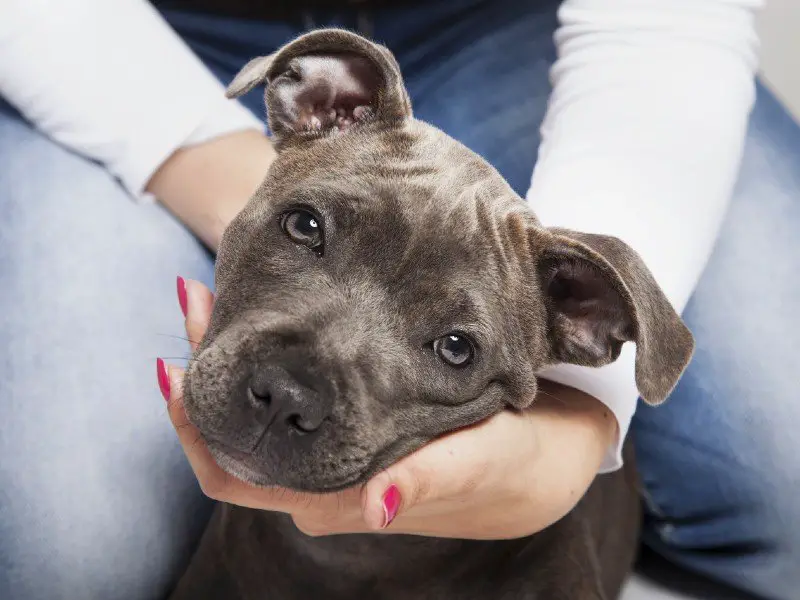
The American Pit Bull Terrier is a breed in and of itself however, the term “Pit Bull” is used mistakenly to describe many other dog breeds including the:
- American Bulldog
- Cane Corso
- Staffordshire Bull Terrier
- Presa Canario
- Dogo Argentino
- Bull Terrier
- Alphalpha Blue Blood Bulldog
- Bullmastiff
- Boxer
- Olde English Bulldog
Most often confused are the American Pit Bull Terrier, the American Staffordshire Terrier, and the Staffordshire Bull Terrier. This is often the result of cross-breeding between these breeds and a general misunderstanding of the physical characteristics of each.
If you are a dog breed fanatic, you may scoff at some of these mistaken breeds, but the sad truth is that many people label any dog that “looks mean” as a Pit Bull or “bully breed.”
The American Pit Bull Terrier
The American Pit Bull Terrier originates from the English Bulldog – a dog vastly different in appearance to the bulldog of today!
English Bulldogs back in the 1800s were taller and slenderer in build, they looked very similar to the American Bulldog of today. Over the years, the English Bulldog of today became a shorter, more compact breed through selective breeding.
These dogs were bred in the 1800s for bull-baiting – what was considered a “sport” at the time. In 1835 bull-baiting was outlawed, and the public took the bull-baiting dogs and began “ratting”.
Ratting involved putting rats in a pit and letting the bull-baiting dogs kill them while timing which dog killed the most rats. With speed a factor, in winning bets, people began to breed the ratting dogs with terriers for better agility.
The name “Pit Bull Terrier” comes from the rat pit used in ratting, the bulls these dogs used to fight, and the terrier that was crossed with the bull-baiting dogs.
Not long before the Civil War, English immigrants came to the United States, bringing their dogs with them. Hence the Pit Bull Terrier became the American Pit Bull Terrier!
Once brought to the United States, the American Pit Bull Terrier was trained to herd and protect cattle and livestock, to protect the homeplace, and even to guard children. This role as a babysitter is where the American Pit Bull Terrier got the nickname “the nanny dog.”
Despite humans breeding the Pit Bull for an awful purpose, the breed went on to become a loving, loyal family dog.
How Does the Lifespan of a Pit Bull Measure Up To Similar Breeds?

The average lifespan of a pit bull is between 12 and 14 years. Similar breeds including the Staffordshire Bull Terrier and the American Staffordshire Terrier fall in the same lifespan expectancy.
Compared to other dogs of similar size and stature, the Pit bull has quite a lengthy lifespan.
American Pit Bull Health
The biggest factor influencing any dog’s lifespan is their health. Although the pit bull tends to be a rather hardy breed, they are prone to certain health conditions.
Cancer
Most dogs of today are prone to cancer due to genetic tendencies and environmental influences. Certain breeds, however, are more prone to certain types of cancer.
Pit Bulls are more likely to develop skin cancer and mast cell tumors.
Other common cancer types in most dog breeds include:
- Bladder cancer
- Mammary carcinoma
- Hemangiosarcoma
- Lymphoma
- Prostate cancer
- Osteosarcoma
- Oral tumors
There is nothing that we can do to prevent our dogs from developing cancer, but we can lessen the likelihood of cancer through genetic screening, spaying, and neutering, and limiting your dog’s exposure to harmful chemicals like cigarette smoke.
It is also worth noting that not all cancers are terminal. Many dogs go through treatment for cancers and go on to live cancer-free lives.
Cancer treatments include radiation, chemotherapy, and surgery. Dogs tend to respond well to these cancer treatments and have few of the side effects that humans experience.
A dog’s response to cancer treatment and whether the cancer will return after remission is dependent on a dog’s age, their health aside from the cancer, the type of cancer, the stage of cancer, the size of the cancer, and whether the cancer has metastasized.
Hip Dysplasia
Hip dysplasia is a hereditary condition that affects the ball and socket joint of the hip. Large breed dogs are particularly prone to hip dysplasia.
The hip joint is a ball and socket joint. The ball of the femur (the rounded end of the bone) should fit well into the socket that is the hip joint.
In healthy dogs, the ball of the femur is held in place by ligaments and slides smoothly within the socket of the hip joint during movement.
Dogs with hip dysplasia do not have this smooth motion because the ball and socket do not fit together properly. This can be caused by numerous anatomical changes including
- The hip socket may be too shallow so that the head of the femur is not securely in place.
- The head of the femur may be malformed so that it does not slide smoothly in the hip socket.
- There may be bony growths that interfere with smooth movement.
These changes cause looseness in the hip joint and stretch the ligaments that hold the joint together. As the joint becomes looser, it becomes unstable and causes pain, difficulty walking, damage to the bone, and can lead to degenerative disease in the joint.
Larger breeds and heavier breeds are disproportionately affected by hip dysplasia because their genetic predisposition for the condition is amplified by their faster rate of growth, diet and nutrition, and types of exercise.
Although hip dysplasia may not seem as though it would impact a dog’s lifespan, it can result in a decrease in their quality of life, leading to euthanasia.
Skin Conditions
Breeds like the Labrador Retriever have a protective undercoat that protects their skin from irritants. Pit Bulls do not have this undercoat and their “topcoat” is shorter which makes their skin more susceptible to irritation.
Skin allergies are common in pit bulls. Often these allergies are caused by environmental irritants, and occasionally, they can also result from food allergies and nutritional deficiencies.
Another skin condition commonly seen in pit bulls is ichthyosis. Ichthyosis is a condition where the skin becomes itchy, dry, and flaky. The large flakes of skin that result look like fish scales (which is how this condition got its name.)
Dogs with ichthyosis frequently have other skin abnormalities.
Pit bulls with white coloration are also genetically predisposed to develop a sunburn, more likely to have skin rashes, and often experience itching. Pit Bulls with “red” fur are less likely to have these types of issues.
Like hip dysplasia, skin conditions may not seem as though they would impact a dog’s lifespan, but they certainly can! Skin conditions that are left untreated can lead to infection, and if left untreated, that infection could take over.
Dogs with skin problems caused by genetics also tend to have other health problems, including a poor immune system. This makes these dogs more likely to develop infections and contract illness.
Hypothyroidism
Hypothyroidism is another common health problem seen in pit bulls.
The thyroid is a gland in the neck that regulates the body’s metabolism by secreting hormones. In dogs with hypothyroidism, the thyroid is underactive and does not secrete adequate amounts of thyroid hormone. This causes the metabolism to slow down.
There are two common causes for hypothyroidism in dogs – lymphocytic thyroiditis which is believed to be an autoimmune disease, and idiopathic thyroid gland atrophy. Of these two conditions, lymphocytic thyroiditis is the most common.
Lymphocytic thyroiditis is a genetic disease.
While hypothyroidism cannot be cured, it can be treated with thyroid replacement hormone – a lifelong medication.
Dogs that are treated for hypothyroidism can live a normal life. Left untreated, though, hypothyroidism can lead to death.
Heart Conditions
Pit bulls also have a tendency towards certain genetic heart conditions including aortic stenosis.
Aortic stenosis is a heart malformation that is present at birth. The aortic valve is the valve of the heart that takes blood out of the heart and to the body. In aortic stenosis, the aortic valve is narrowed so the heart must work harder to push blood out of the chamber.
Aortic stenosis may be left untreated in dogs with very mild cases however, more serious cases require treatment with beta-blockers. Surgery is rare but is a consideration. Dogs with aortic stenosis must have their exercise restricted.
The biggest risk concerning dogs with aortic stenosis is sudden death.
Pit bulls are also prone to arrhythmias and heart disease.
Dogs can be born with arrhythmias or develop them over time. Left untreated arrhythmia can cause sudden death.
Puppies can be born with congenital heart malformations that lead to heart failure and adult dogs can develop heart disease over time. Heart disease and heart malformations can also contribute to a shortened life due to heart failure or arrhythmias.
Cerebellar Ataxia
Cerebellar ataxia is a degenerative condition of the nervous system and a hereditary disease. Dogs with cerebellar ataxia start showing signs of incoordination and general difficulty with mobility.
Unfortunately, there is no cure for cerebellar ataxia and symptoms become progressively worse. In most cases, dogs in the later stages of cerebellar ataxia are euthanized due to having a poor quality of life.
Dogs can carry the cerebellar ataxia gene and not have symptoms, but if two carriers of the faulty gene are bred, the puppies can inherit two faulty genes and develop the disease.
There is a genetic test available (NCL-A) to test breeding dogs for the faulty cerebellar ataxia gene. The test is 99% effective, however, not all breeders are so committed to their dog’s health that they carry out testing.
Gastric Torsion
Gastric torsion is also known as bloat is a digestive condition in which the stomach fills with fluid, gas, or food and expands. As the stomach expands, it can cut off the blood supply to surrounding organs. In some cases, the stomach will turn on itself or “flip” causing a severe problem to get even worse.
Many factors can contribute to bloat, but no matter the cause, it is always a life-threatening emergency. Dogs with bloat must receive immediate medical attention or they risk death.
How You Can Help Your Pit Bull to Live Longer
There are several things that you can do to help your pit bull to live a longer and healthier life.
Do Not Support Bad Breeders
If you choose to buy your pit bull (please consider rescue!) it is crucial that you do your research and only select a reputable breeder.
Selecting a reputable breeder will decrease the chance of your dog having heritable conditions. Since reputable breeders put so much into their dogs, they select only the finest genetic specimens to breed. Consequently, a puppy from one of their litters should have only the best genes.
Bad breeders, however, breed for money rather than to better the breed. This results in dogs with genetic mutations being bred and birthing puppies with a variety of preventable genetic conditions.
Spaying and Neutering
Spaying and neutering is another step you can take to help your dog to live longer!
Spaying and neutering have a variety of benefits including:
- Eliminating the risk of certain cancers (cancer is a problem for most dog breeds.)
- Neutering a male will lessen the chance of them escaping to go in search of a female in heat and being struck by a car or attacked by another animal.
- Spaying a female eliminates the risk of birthing complications and post-pregnancy infection.
- Spaying the female eliminates the risk of dangerous infections in the uterus.
Of course, there are behavioral benefits to spaying and neutering as well, plus the knowledge that you are not contributing to the already exploding homeless pet population.
Letting Them Live Indoors With You!
Dogs are social animals and should always be kept with their “pack.” In the case of domestic dogs, that pack is you. Dogs that are kept outdoors in isolation from their “pack” develop a range of problems including
- Loneliness
- Destructive behavior
- Depression
- Aggression
- Constantly trying to escape
These problems can all lead to premature death whether it is due to a car accident, euthanasia due to aggression, or simply giving up.
Being an “outdoor dog” can also cause premature death due to parasite exposure, animal attacks, or succumbing to the elements.
Simply put, if you cannot let your dog live indoors as part of your family or provide them with a healthy and nurturing environment, do not get a dog!
Keeping a Healthy Diet
Diet is another way that you can help your pit bull to live a longer, healthier life.
Feeding a healthy diet that is optimized for your dog’s lifestyle is a great place to start. Make sure that you are feeding a healthy balance of carbohydrates, proteins, and fats; feeding enough calories, and not giving your dog too much “people food.”
Another thing to watch for is portioning! Giving your pup too much dog food can cause obesity and obesity comes with a slew of health problems. One such problem is increased pressure on the joints which can worsen existing arthritis and cause joint pain. These joint symptoms then make your dog reluctant to exercise which only compounds the problem.
Maintaining a Healthy Exercise Routine
A healthy exercise routine is especially important to humans and dogs!
Not only does regular exercise help to keep your dog at a healthy weight, but it also strengthens their muscles and keeps their heart-healthy!
Failing to exercise your dog regularly can also contribute to behavioral problems such as going through the garbage and counter surfing! These behaviors can then cause intestinal obstruction and poisoning when your dog eats something they should not.
Routine Maintenance Care
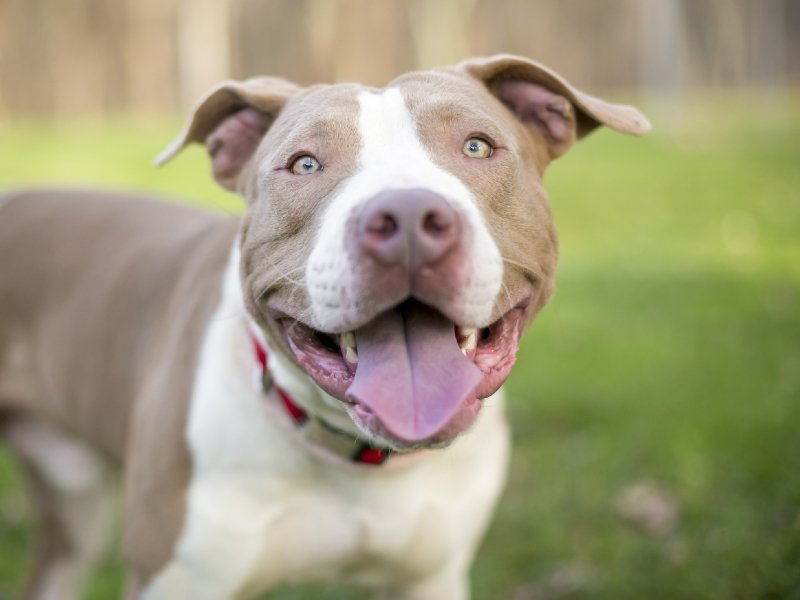
Perhaps one of the most important things that you can do for your pit bull to keep them healthy and happy is to keep up with routine maintenance care! Routine care includes monthly preventatives, annual (or bi-annual) preventative vet care, management of chronic conditions, and regular grooming.
Monthly preventatives include heartworm pills and flea and tick preventatives. Fleas and ticks can pass on a variety of diseases – some of which can be fatal if left untreated. Infection with heartworm can lead to blockage of or damage to the structure of the heart and lead to death.
Annual (or biannual) vet visits are necessary so that your dog can receive vaccinations to prevent diseases like rabies which can be fatal. Regular vet visits are also the best way to catch health concerns before they cause serious damage or become untreatable. Young and adult dogs should routinely visit the vet once a year, senior dogs should visit at least twice a year, and dogs with chronic conditions may require more frequent visits.
Chronic condition management is the management of any ongoing health condition – for example, administering insulin to a diabetic dog. Managing chronic conditions is a crucial part of keeping your dog healthy and preventing health conditions from worsening or causing complications.
Lastly, regular grooming may not seem as though it could affect your dog’s lifespan, but poor grooming can be very detrimental.
Dogs that require regular brushing and clipping can develop hair mats that harbor parasites and tug on the skin causing bleeding and infection. Untreated infection can cause systemic infection and death. Untreated parasites can cause anemia, malnutrition, and disease.
Nail clipping stops the nails from growing into the paws and causing wounds that can become infected.
Dental care keeps dental disease at bay. Without regular dental care, dental disease can cause tooth loss and anorexia, both of which can lead to malnutrition.
How Long Do Pit Bulls Live?
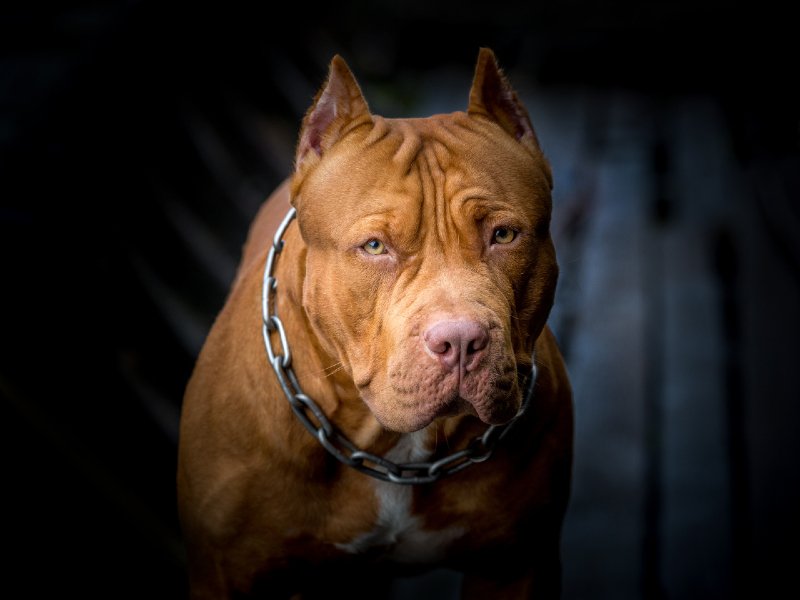
As you can see, many factors influence how long a pit bull may live. Fortunately, there are steps you can take to ensure that your dog lives for as long as possible. These include:
- Ensuring the genetic health of purchased puppies by buying from a reputable and experienced breeder.
- Spaying and neutering your dog.
- Keeping your dog indoors.
- Feeding a healthy diet.
- Maintaining a good exercise routine.
- Staying on top of veterinary and routine maintenance care.

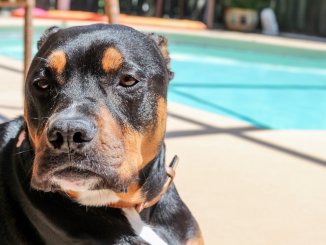


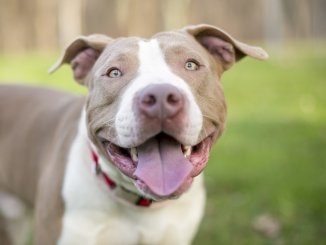


Be the first to comment